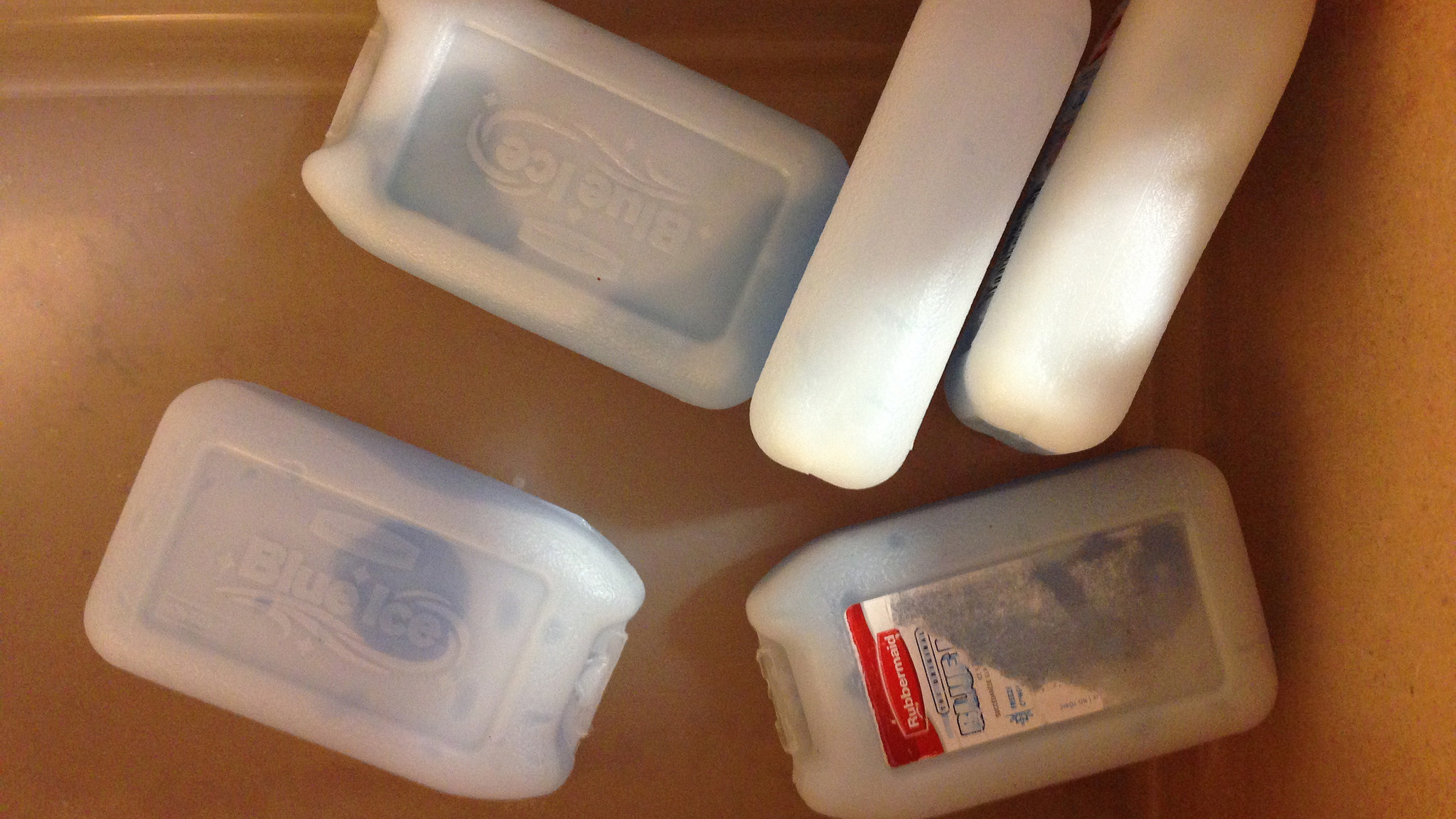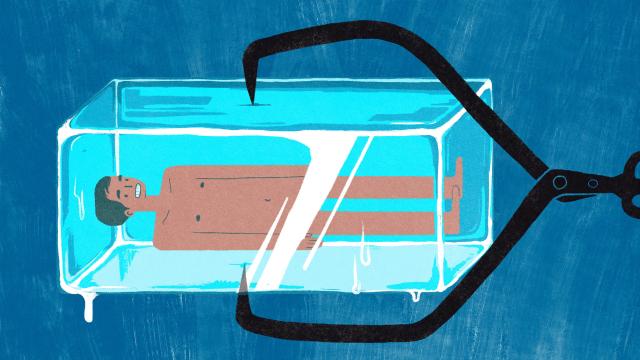Put simply, cryotherapy is the process of using cold temperatures for medicinal purposes, usually to treat pain. In recent years, it’s become a popular in spas and sports centres to soothe aching muscles, improve arthritic symptoms, “slow ageing” and even help you lose weight. Your bullshit meter might be going off by now, and rightfully so. Here’s the bottom line.
Title illustration by Angelica Alzona. Image by stevendepolo.
To be fair, if you’ve ever applied an ice pack to any part of your body to soothe pain or swelling, you used a form of cryotherapy. The more extreme form of this is called “partial-body cryotherapy” (also known as “whole-body cryotherapy”, or WBC), which involves you sitting or standing in an individual-sized chamber, with your head outside and wearing minimal clothing. Then vapours of liquid nitrogen or refrigerated cold air, at temperatures of minus 130C to 180C, gradually fill the confined space. The treatment typically lasts between two to four minutes.
I’ve taken full ice baths before, and I can tell you they’re not pleasant. WBC with cold air is supposedly more bearable than an ice bath. In general, cryotherapy supposedly works by substantially cooling your muscle and skin temperatures, as this study in PLOS ONE found, which makes your blood vessels constrict so less blood flows to the injured (or sore) spot. In effect, this eases the discomfort you feel. That makes sense, but when it comes to applying this to your entire body, well, there’s a lot to cryotherapy we don’t yet know about. As with every fitness rage however, that hasn’t stopped folks from getting blasted with subzero air and paying lots of money to do so.
Several celebrities and well-known athletes swear by it for various reasons. Kobe Bryant and LeBron James, for example, use WBC to deal with muscle soreness and help them recover faster from demanding training sessions. Kate Moss and Jessica Alba use it for supposed beauty benefits, like younger and healthier-looking skin. Some spas that offer WBC claim it also reduces cellulite and, counterintuitively, increases circulation in the body. However, this wouldn’t be the first time athletes and celebrities peddled expensive-but-useless products and beauty treatments to a gullible public.
Also not surprisingly, WBC treatments don’t come cheap. They’re about $US35 ($47)-65 per session, and can go up from there depending on where you have it done. So is it worth it? According to the US FDA and other institutions: Nope.
There’s No Scientific Evidence to Support WBC’s Claims

The US Food and Drug Administration (FDA) recently reported that the purported medical benefits of whole-body cryotherapy lack any scientific evidence.
And despite claims by many spas and wellness centres to the contrary, the U.S. Food and Drug Administration (FDA) does not have evidence that WBC effectively treats diseases or conditions like Alzheimer’s, fibromyalgia, migraines, rheumatoid arthritis, multiple sclerosis, stress, anxiety or chronic pain.
In fact, the FDA reports that none of the WBC devices used in these spas has been “cleared or approved by the agency in support of these claims”. In short, we simply don’t know what would happen to the body when it’s exposed to ultra-cold temperatures for two to four minutes.
Further, any benefits on muscle soreness are unclear, says a study review in The Cochrane Database of Systematic Reviews. Altogether the authors analysed four studies which compared treatment of WBC with rest to no WBC for muscle soreness in active male subjects (at present, there are no studies and no data on female subjects). Overall, the authors determined that WBC’s claims of preventing or treating muscle soreness just didn’t hold up. WBC neither reduces muscle soreness nor improves recovery.
The study authors also raised a good point about a distinct lack of evidence around adverse effects, especially when there are known dangers to prolonged exposure to extreme temperatures. That, and a further lack of data around WBC on women are huge holes in the literature.
That said, cryotherapy, at least an ice pack (or bag of frozen peas) on a soft-tissue injury or sprain, is effective at numbing the pain, but obviously not treating it.
It Took a Cryotherapy-Related Death to Bring This to Everyone’s Attention
In 2015, a spa worker in Nevada named Chelsea Ake-Salvacion was found dead in the spa she worked at. The coroner’s report linked her cause of death to asphyxiation. According to the FDA report:
The addition of nitrogen vapors to a closed room lowers the amount of oxygen in the room and can result in hypoxia, or oxygen deficiency, which could lead the user to lose consciousness.
Then there’s the concern over frostbite, burns or eye injury from the extreme temperatures, the FDA says. In Nevada, the state’s health department is recommending that machines not be used by “minors under 18, those under 5 feet [1.52m] tall and anyone with certain health conditions, such as a history of stroke, high blood pressure, seizures and infection, as well as people who are pregnant or have pacemakers or claustrophobia”. That said, these regulations are voluntary, and no one is actively enforcing them. Australia is also behind in this area. If you’re interested in checking it out or already are doing whole-body cryotherapy, the least you should do is check in with your doctor.
The topic of WBC is woefully under-studied and over-marketed. We do know that it can be dangerous, and we do know that any time a spa or celebrity says something has health benefits, it picks up steam, and it also just happens to be expensive, it’s probably more marketing and woo than actual science and medicine. However, many important questions are unanswered about WBC, and those questions will have to wait until the benefits and dangers are properly studied — and until they are, so should you.

Comments